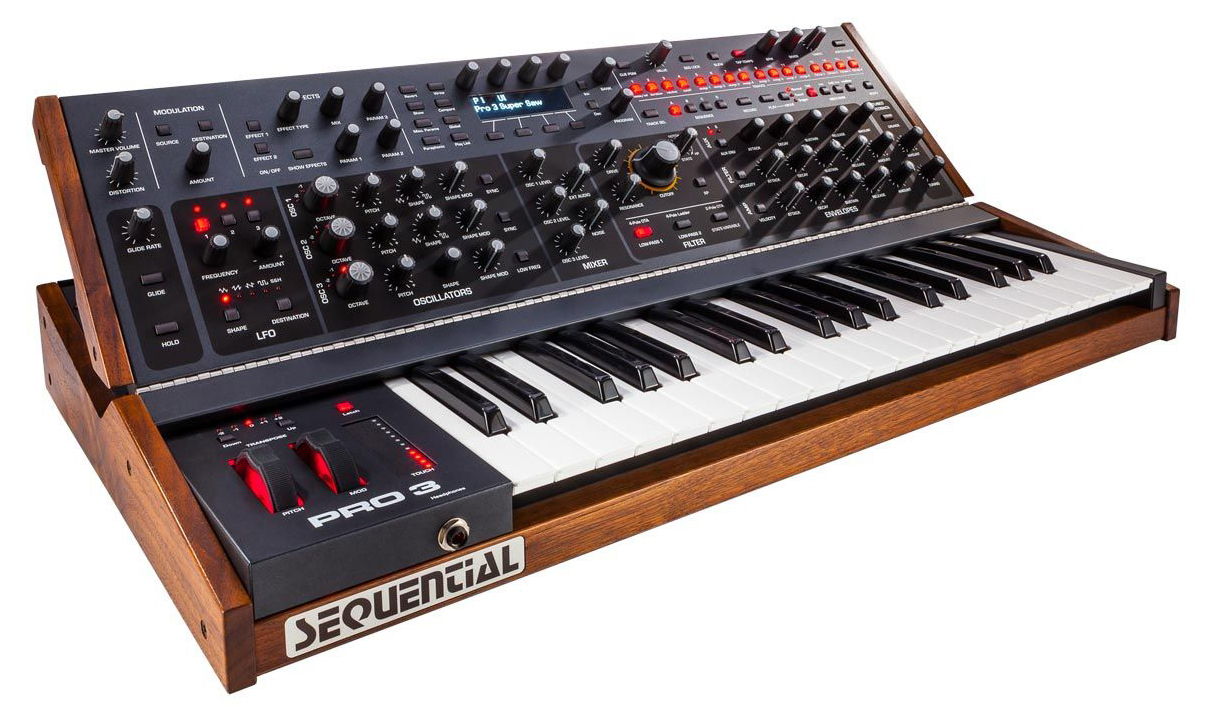

It was possible to sequence external MIDI hardware with the original Circuit by muting channels in the mixer, but you could only send note data. allowing you to sequence and mix everything within the Circuit Tracks. These inputs can be any line-level sound source you like, but the obvious approach is to use them for your external MIDI gear. The inclusion of the two mono input sockets on the back of the unit is a key feature here, allowing you to route signals into the mixer and apply all the internal effects – delay, reverb, sidechain and master compressor. The two MIDI tracks are where external instruments can be sequenced and controlled, allowing you to send note and CC automation to other MIDI hardware. You can also apply probability to triggers and mutate steps to generate new patterns. The new groovebox offers 32-step loops and the option to record unquantised patterns in real-time, or with micro timing steps for strum-style effects or rapid retriggering. Even so, the Circuit Tracks surpasses the original’s sequencing capabilities. Still, thanks to Novation’s obsessive firmware updates – there have been eight – each with incremental tweaks and improvements, the instrument has become impressively deep. The original Circuit workflow was good from the start. That’s what make’s Circuit Tracks a highly versatile and wide-ranging instrument, as the original was.

Sonically, the Circuit Tracks’ core synth engine lives in the same world as the original, based on the virtual analogue technology behind Novation’s UltraNova synth. There’s also a microSD card slot to expand the storage and a new pair of mono audio inputs. USB connection for hooking up to a computer is now via the smaller USB-C connector, which doubles as a power supply. Alongside them on the back panel, you’ll find the same quarter-inch stereo outputs as the original, joined by a new analogue sync output.
Pro video instruments review upgrade#
Pleasingly, despite its slimmer design, the Circuit Tracks features full-size DIN sockets for the MIDI in, out and thru connection on the back panel, which is a clear upgrade on the 3.5mm sockets and breakout cables required to connect external MIDI gear to the original Circuit. The lack of a speaker might be an inconvenience to some, but we’d hazard that most Circuit owners would either play through headphones or external speakers most of the time anyway. However, this isn’t quite the downgrade in portability that might suggest, since it now has a built-in rechargeable lithium-ion battery, giving up to four hours use. The Circuit Tracks loses both the speaker and the battery compartment.
Pro video instruments review portable#
The original Circuit was fully portable thanks to a built-in speaker and the ability to run on six AA batteries. You even occasionally see multiple Circuits hooked up to create a self-contained ecosystem of groovebox goodness. Elsewhere you see Circuits being used as part of bigger hardware setups, syncing with other machines. For some, it can be a tentative first dip-of-the-toe into making music for others, it’s attractive because it offers a refreshing break from screens and computers. There are a few reasons why people specifically turn to the Circuit. You still get control over two internal polyphonic synth tracks and four sample-based drum tracks, and the sidechain control remains but is no longer quite so prominent. This is a welcome shift and signals a new focus for the sequencer. To accommodate this, the two dedicated sidechain tracks found in the original have become two dedicated MIDI tracks for controlling external hardware. The emphasis this time is on connecting other instruments over MIDI. The new Circuit Tracks expands on the original Circuit features in several ways. It was joined in 2017 by the analogue-digital hybrid Circuit Mono Station, which combined a similar sequencing concept with an analogue synth engine derived from the Bass Station II keyboard. The original Circuit was released in 2015, based on Novation’s long-established virtual-analogue synthesis prowess teamed with a user-friendly step-sequencing workflow.


 0 kommentar(er)
0 kommentar(er)
